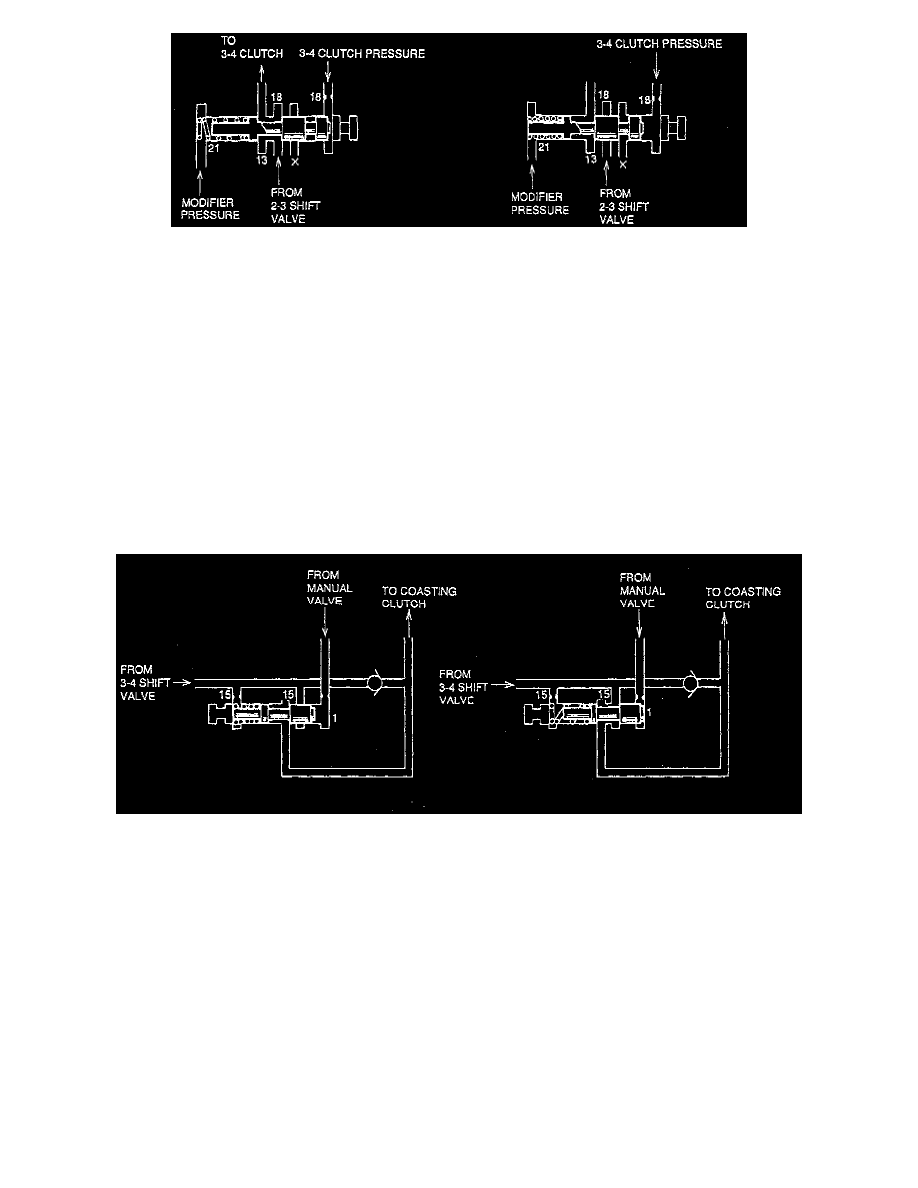Millenia L V6-2.5L DOHC (1997)

The bypass valve controls 3-4 clutch application timing and shifting shock during 2nd -> third gear shifting.
Spring force and modifier pressure (21) normally push the valve to the right side, thus transmitting line pressure (13) to 3-4 clutch application pressure
(18), 3-4 clutch application pressure (18) works on the right end of the valve, and moves the valve to the left side.
As 3-4 clutch application pressure (18) increases, the valve moves to the left, in spite of spring force and modifier pressure (21) pushing the valve to the
right. Therefore, during 2nd -> third gear shifting, line pressure (13) is transmitted to the 3-4 clutch application pressure through the bypass valve,
quickening 3-4 clutch engagement.
Beyond a certain level, the valve closes the path for line pressure (13); the line pressure goes through the orifice check valve, causing a slow increase in
3-4 clutch application pressure.
The modifier pressure (21) applied to the left end of the valve assures that 3-4 clutch application timing matches throttle valve opening angle.
This process controls 3-4 clutch application timing and shifting shock.
Coast Timing Valve
The coast timing valve controls the coasting clutch application timing.
Line pressure (1), distributed by the manual valve, constantly works on the right end of the valve and moves the valve to the left side by overcoming
spring force. In third gear, 2-4 brake band release pressure (15) works on the left side of the valve, trying to push the valve to the right side. At the same
time, the 2-4 brake band release pressure (15), which is also acting on the center of the valve, passes through the valve, engaging the clutch. The orifice
check valve controls the application timing.
Low Reducing Valve
